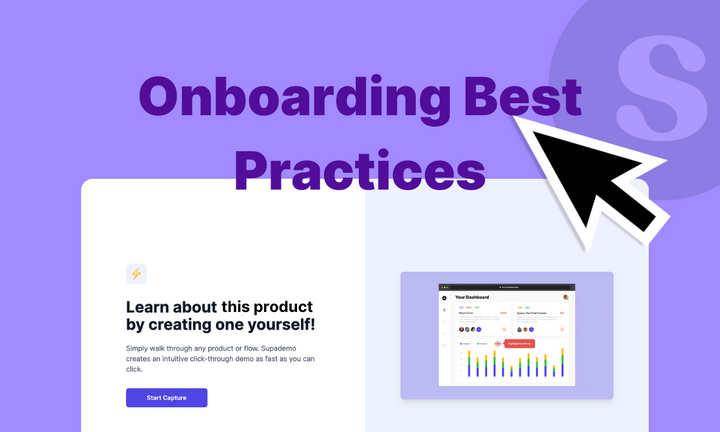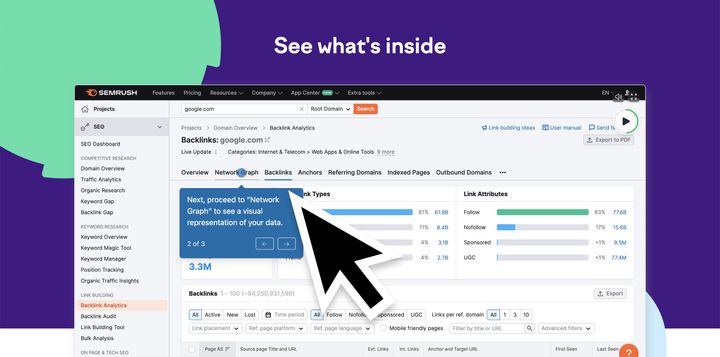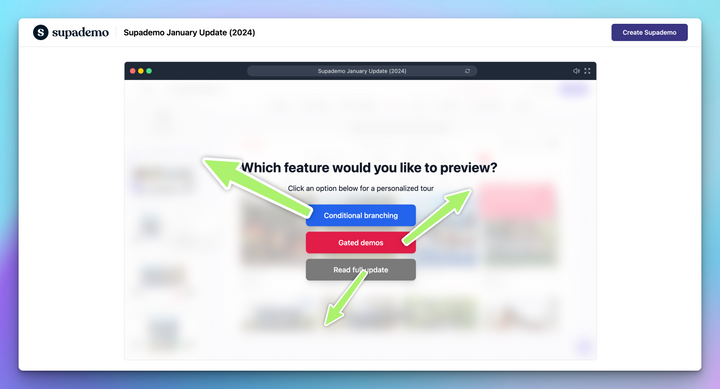Most SaaS companies lose 75% of new customers within their first week due to poor onboarding.
The solution isn't more features, it's better processes.
Customer onboarding done right eliminates over 100 hours of monthly support work, reduces churn, and turns confused buyers into expansion revenue drivers.
These 15 strategies, from interactive role-based demos to milestone-triggered feedback, help you guide customers from purchase to success while scaling your team's impact.
What is customer onboarding?
Customer onboarding is the structured process of helping new customers achieve their first success with your product after purchase. It's the critical bridge between initial sale and long-term retention, guiding customers from setup to value realization.
Effective onboarding ensures customers understand how to solve their specific business problems with your solution. For SaaS companies, strong onboarding directly impacts customer lifetime value, retention rates, and expansion revenue.
| Aspect | User Onboarding | Customer Onboarding |
|---|---|---|
| Focus | Individual end user | The organization or buying entity |
| Approach | Automated and in-product | Manual or hybrid (calls, docs, training sessions) |
| Key Elements | Product tours, interactive guides, tooltips, onboarding checklists, contextual cues | Kickoff calls, onboarding plans, role-based training, data imports, stakeholder alignment |
| Primary Goal | Drive product adoption and guide users to key actions quickly | Enable the customer organization to realize value and achieve their goals |
| Risk of Neglecting | Poor feature adoption, user confusion | Misalignment, low engagement from stakeholders, increased churn risk |
| Ideal Outcome | Activated, self-sufficient users | Account-level success and long-term retention |
| Best When | Used to support scalable growth and self-serve models | Used for high-touch accounts, complex setups, or enterprise customers |
The cost of poor customer onboarding?
Poor onboarding creates immediate costs like customer churn, wasted acquisition spending, and support team overwhelm. Long-term impacts include lost expansion revenue, damaged brand reputation, and reduced team morale.
Since customers consider onboarding support crucial for product valuation, failures affect your entire growth trajectory.
15 customer onboarding best practices with real-world examples
Most onboarding fails because companies focus on features, not outcomes. These 15 proven strategies transform confused new customers into confident power users who become your biggest advocates and growth drivers.
1. Map your customer onboarding journey
Document every customer touchpoint from purchase to success in the first 90 days. Include emails, calls, training sessions, and team handoffs. Identify who owns each step and what outcome you're achieving.
Create three parallel tracks: team actions, customer experience, and customer emotions. This reveals friction points before they cause churn. Build separate maps for different customer segments since startups need different paths than enterprises.
2. Send action-triggered welcome emails
Replace generic welcome emails with smart sequences that respond to customer actions: account creation, first login, feature usage, or inactivity periods.
Each email should guide customers toward their next logical step using personalized content based on role, company size, or signup goals.

Segment users and personalize content based on actions and roles
Time emails to coincide with milestones or engagement drops
Keep messages concise and focused on single actions
Use engaging subject lines with clear calls-to-action
Maintain engagement when users aren't actively using your product
3. Personalize onboarding for different roles and use cases
Different roles need different product demo experiences to see relevant value quickly. A CFO wants to see reporting and ROI features, while an end-user needs workflow and daily task functionality.
Create role-specific demo paths that showcase features most relevant to each user's responsibilities.
63% of teams use interactive demos during onboarding, and 81% report a high or very high impact on onboarding and adoption. (State of Interactive Demos 2026 report)
With Supademo, you can create role-based demos using dynamic variables and demo branching to let users self-select their experience based on their position or primary use case. This puts them in control while ensuring they see what matters most to their success.
4. Use templates and checklists
Templates and checklists eliminate guesswork and ensure consistent customer experiences. They provide clear roadmaps that reduce anxiety and accelerate time-to-value.
Notion's onboarding checklist covers all the basics, such as highlighting text, creating subpages, and exploring teamspaces, providing a structured path through core features.

Take it further with interactive checklists, like Supademo's onboarding guide, which lets customers check off tasks while providing contextual guidance, creating more engaging experiences than static documents.
5. Simplify account setup and configuration
Avoid complex integrations during initial setup. Let customers experience core functionality first, then introduce advanced configurations once they understand your product's value.
Airtable's sign-up process asks only for essential information like user role and pre-configures default settings that work for most users.

6. Show helpful empty states
Empty screens are missed opportunities to guide customers forward. Instead of blank dashboards, design empty states that explain what belongs there and how to add it.
Use sample data, getting-started tips, or quick-action buttons to provide immediate value and prevent customers from abandoning tasks.
At Supademo, customers get various interactive guides to explore features and prebuilt product demos on the home page for inspiration.

7. Guide customers to their first "Aha!" moment
Focus onboarding on core value, not feature explanations. Identify the specific moment when customers realize your product solves their problem—that's your "Aha!" moment.

8. Focus on team-centric onboarding
Single-user onboarding limits your product's potential. When only one person experiences your tool, they can't explore team features or build internal momentum for adoption.
Lateral usage across the team means a wider penetration surface area, more use cases, and higher odds of reaching an internal champion. Encourage users to invite others during onboarding to convert them and pique interest.
~ Joseph Lee, CEO, Supademo
Team onboarding creates internal champions, increases feature discovery, and builds wider organizational buy-in. Multiple users explore different use cases and share them with colleagues, creating natural product evangelists.

9. Create self-serve product guides
Build visual knowledge bases that customers can access independently, reducing support ticket volume.
"Supademo has played a pivotal role in elevating the quality and efficacy of our customer support and success org. Through it, we've been able to craft a comprehensive and top-notch knowledge base. It saves us hours in unnecessary, redundant support work."
~ Nick Lighter,Lead Account Executive
RareCircles a community engagement platform, struggled with customer service consistency during their major product pivot from Web3 to Web2. They built self-serve product guides and visual documentation, saving 3 hours per week in redundant support work while improving service quality and ensuring consistent information delivery.
10. Celebrate milestones and achievements
Recognize customer progress to maintain motivation and momentum. Send congratulatory messages when customers complete setup, reach usage goals, or master key features.
Simple celebrations like badges, emails, or in-app notifications make customers feel accomplished and encourage continued engagement with your product.
11. Make onboarding accessible on users' terms
“Don’t impose a strict rubric or timeline on users. It’s best to make your onboarding accessible across various channels and whenever the user is ready to engage and learn."
- Joseph Lee, CEO at Supademo
Make onboarding accessible across various channels whenever users are ready to engage and learn.
Offer support across email, chat, calls, in-app guided tours, direct access to learning libraries, and self-service resources so customers can get help when and how they prefer.
12. Monitor key onboarding metrics
Track leading indicators that predict customer success. Monitor completion rates at each stage to identify drop-off points and measure time-to-value for meaningful outcomes.
Supademo provides engagement analytics showing which onboarding content customers interact with most, session duration, and drop-off points. This data helps optimize your experience by identifying high-performing demos and conversion drivers.
Here are all the key customer onboarding metrics you should ideally be tracking:
| Metric | What It Measures | Why It Matters |
|---|---|---|
| Time-to-Value | How quickly customers achieve first business outcome | Faster value realization increases retention |
| Time-to-Go-Live | Days from purchase to full product deployment | Measures implementation efficiency |
| Onboarding Completion Rate | Percentage finishing each milestone | Identifies process bottlenecks |
| Customer Health Score | Overall engagement and adoption across account | Predicts renewal and expansion opportunities |
| Implementation Success Rate | Customers who successfully deploy and configure | Indicates process effectiveness |
| Feature Adoption Rate | Customers actively using core features | Shows product stickiness |
| Team Adoption Rate | Percentage of customer team members actively using product | Measures organizational penetration |
| Training Completion Rate | Customers completing onboarding education | Indicates engagement with learning resources |
| Customer Satisfaction (CSAT) | Satisfaction ratings at key milestones | Early churn warning system |
| Customer Effort Score (CES) | How easy customers find the onboarding process | Measures friction in the experience |
| Net Promoter Score (NPS) | Likelihood to recommend during onboarding | Indicates early advocacy potential |
| Support Ticket Volume | Number of help requests during onboarding | Shows process clarity and effectiveness |
| Documentation Engagement | Usage of self-serve resources and guides | Measures content effectiveness |
| Integration Success Rate | Successfully connected third-party tools | Critical for B2B implementation success |
| Milestone Achievement Rate | Customers reaching predefined success markers | Tracks progress toward full adoption |
| Customer Risk Score | Early warning indicators of potential churn | Enables proactive intervention |
13. Collect feedback and optimize the onboarding flow
Combine metrics data with direct customer feedback to identify optimization opportunities. Then take action based on what you learn.
- Ask customers where they struggled and what helped most
- Redesign confusing steps based on feedback
- Streamline stages with high drop-off rates
- A/B test new messaging and timing
- Create new content for features customers ask about most frequently
14. Offer ongoing education and training
Onboarding doesn't end after the first month. Provide continuous learning opportunities to help customers discover new use cases and master advanced features.
Ways to offer ongoing education:
- Host regular webinars on advanced features and best practices
- Create progressive learning paths for different skill levels
- Send feature spotlight emails highlighting underused capabilities
- Build a searchable knowledge base with interactive demos
15. Identify expansion opportunities early
Watch for expansion signals during onboarding. When customers hit usage limits, request advanced features, or mention additional teams, they're ready for upgrades. Listen for cues like "our marketing team needs this too" or "can we integrate with our CRM?"
Expansion signals:
- Usage approaching plan limits
- Requests for features in higher tiers
- Mentions of additional teams or departments
- Questions about integrations or advanced workflows
- Success with initial use cases leading to broader applications
Time upsell conversations when customers see clear value. Early identification allows you to strike while enthusiasm is high and ROI is obvious.
Best practices for automating customer onboarding
The most successful onboarding programs blend automation efficiency with human expertise. Automation handles the predictable while humans focus on complex problem-solving and relationship building.
Human vs. automation balance: When to use each in customer onboarding
The most successful onboarding programs blend automation efficiency with human expertise. Automation handles the predictable while humans focus on complex problem-solving and relationship building.
| Use Automation For | Keep Humans For |
|---|---|
| Welcome email sequences and resource delivery | Complex technical discussions and custom configurations |
| Account setup confirmations and next-step reminders | Strategic planning sessions and goal setting |
| Basic product tutorials and feature introductions | Objection handling and concern resolution |
| Progress tracking and milestone notifications | Relationship building with key stakeholders |
| Common FAQ responses and help documentation | Crisis management and escalated issues |
| Calendar scheduling and meeting reminders | Custom implementations and technical troubleshooting |
Companies like Textable found the sweet spot by using Supademo to create proactive interactive demos that handle repetitive support tickets while maintaining human support for complex implementations.
This approach eliminated over 100 hours of monthly manual work while improving customer satisfaction through faster response times.
Bonus: Expert tips on customer onboarding practices
#1: Don't turn onboarding into corporate hazing
Paulina Staszuk, Head of Customer Success at Supademo, identifies 10 universal onboarding failures that create chaos instead of clarity.
Her post highlights critical issues like:
- Lacking clear ownership (chaos, not collaboration)
- Using outdated content and obsolete documentation
- Having no success definitions or measurable outcomes
- Overwhelming customers with information dumps
- Missing feedback loops and iteration cycles
Her blunt takeaway? If your onboarding creates confusion instead of reducing friction, you're running corporate hazing, not customer success.
#2: Let customers experience your platform before formal onboarding begins
Strategy: In this Relevate Community podcast, Amanda and Avan emphasize that "no one really knows how to use the tool until they can see them themselves in it." They recommend providing publicly available demos, videos, and industry-specific case studies that let prospects visualize their own use cases.
Key approach: Get customers "in the hot seat using the things, playing with it, touching it and experiencing what it's like inside the platform" through trials and hands-on exploration. This creates stickiness and reduces the fear factor before formal onboarding starts.
Takeaway: Pre-onboarding education through interactive experiences helps customers understand your product's value and builds confidence, making the actual onboarding process smoother and more effective.
How can interactive demos help you in customer onboarding?
Interactive product demos sit at the heart of modern customer onboarding, providing the personalized, engaging experiences customers expect without overwhelming your team with manual work.
When customers can explore your product at their own pace, guided by contextual insights tailored to their specific role and use case, they move from confusion to confidence faster than traditional methods allow.
Ready to transform your customer onboarding?
See how Supademo helps companies create seamless onboarding experiences that reduce churn, accelerate adoption, and scale customer success.




